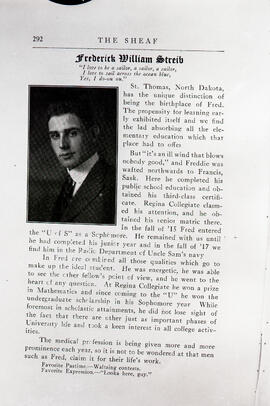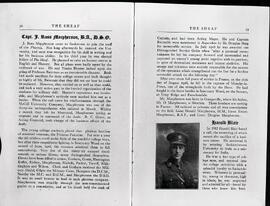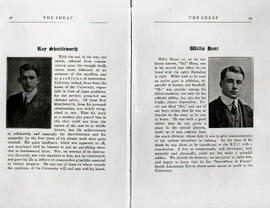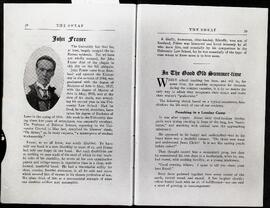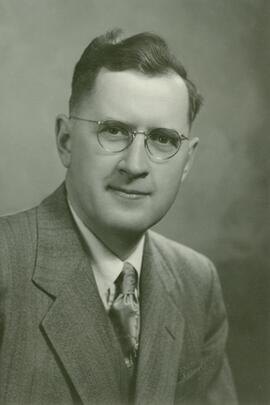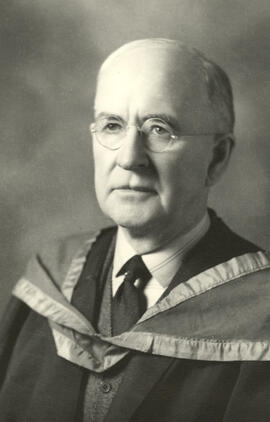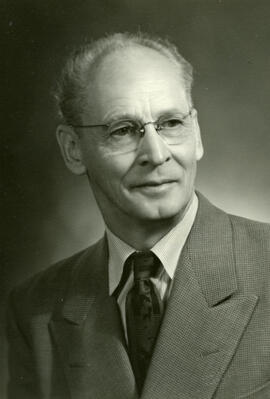Honourary Degrees - Presentation - William G. McIntosh
- A-5227
- Pièce
- Oct. 1972
Fait partie de University of Saskatchewan Photograph Collection
J.W.T. Spinks, University President, making presentation of an honourary Doctor of Laws degree to William G. McIntosh at fall convocation held at Centennial Auditorium.
Bio/Historical Note: William Gordon McIntosh was born in 1915 in Hanley, Saskatchewan. He grew up in Prince Albert, Saskatchewan, where he received his early education. McIntosh attended the University of Saskatchewan in 1932-1933 and obtained his pre-dental qualifications. McIntosh, a scholarship student, received his Degree of Doctor of Dental Surgery from the University of Toronto in 1937. McIntosh became one of Canada’s first teachers and researchers in the field of Periodontics, a new clinical field at the time. During World War I McIntosh was a member of the Royal Canadian Dental Corps; he carried out highly significant research into the management of periodontal diseases. He conducted a practice for many years, primarily in Toronto, specializing in the field of Periodontics. McIntosh was a valued contributor to the teaching program in his specialty at the University of Toronto. He held positions of great responsibility in the Canadian Dental Association, the largest and most influential dental organization in Canada. He was chairman of the Research Committee of the Association during its early formative years; he was a member of the Board of Governors of the Canadian Dental Association from 1957-1961; and he was the Association President in 1959-1960. In 1965 McIntosh accepted the position of Secretary (now Executive Director) of the Canadian Dental Association. Following his outstanding dental career, McIntosh attended the Ontario College of Art from 1977-1984, building a hobby career as a fine sculptor. Primarily working in bronze, his works range from fountains and decorative pieces to the cranial mould that is still used by the Canadian Standards Council to test helmet safety. McIntosh combined his dental dexterity and artistic skills volunteering for many years as a tactile sculptor for the CNIB. For this and for years of recording talking books at the CNIB, he received the Queen's Jubilee Medal. McIntosh died in 2015 in Ontario at age 100.

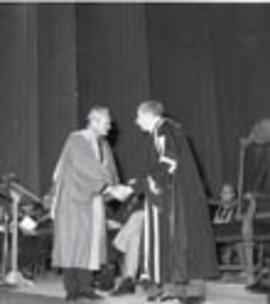
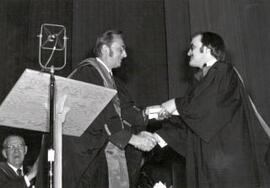
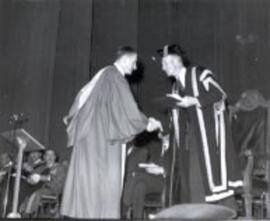
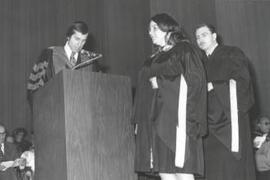
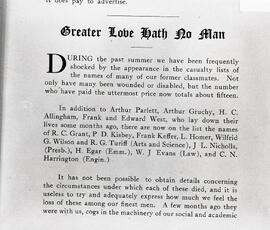
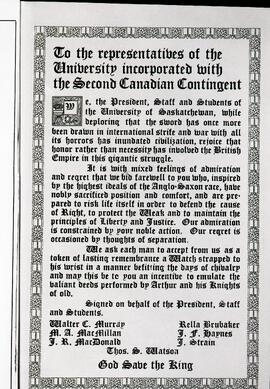
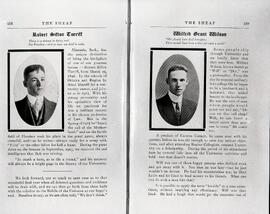
![Sheaf - Clifford Hallett and Glen Hedley [Glenn Hawthorne Headley]](/uploads/r/university-of-saskatchewan-archives/8/2/4/82462aad6095695424bd3fd41576553f8e9b7243d4dcf9b99e2846d01f55bfbf/A-10964_142.jpg)
